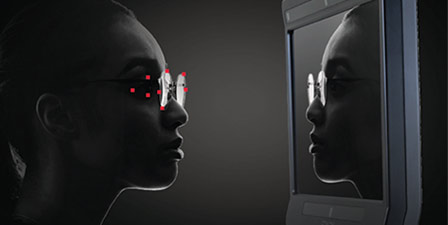Sponsored by IOT
By Deborah Kotob, ABOM
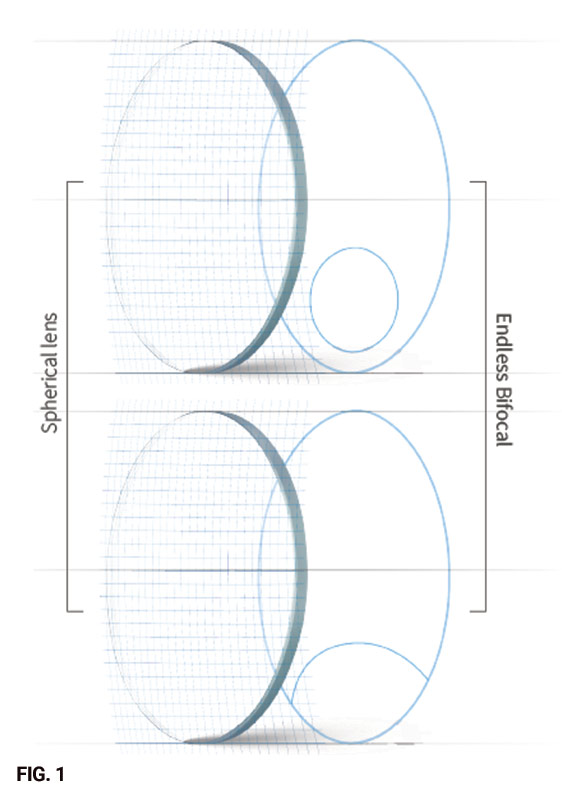
When we hear the term multifocal, we typically think of progressive lenses (PALs), with little thought given to segmented bifocals. However, the bifocal wearer also deserves to experience free-form lens design and technological advancements in their eyewear—and they can. IOT Endless Bifocal free-form design was developed to provide free-form innovations in design and manufacturing so that the bifocal wearer can enjoy the improved field of view, clarity and comfort that only free-form design and lens processing affords.
IOT Endless Bifocal is a free-form round segment bifocal lens with an expanded choice of materials, treatment options and two bifocal segment diameters (Fig. 1). Endless Bifocal lenses utilize back surface free-from technology applied onto any semi-finished spherical lens blank. Digital processing ensures the segment line is virtually invisible for noticeably better aesthetics. Lens structure is very similar to conventional bifocals. Material availability is consistent with other digital free-form lenses. Bifocal segments are available in two diameters, Round and Wide.
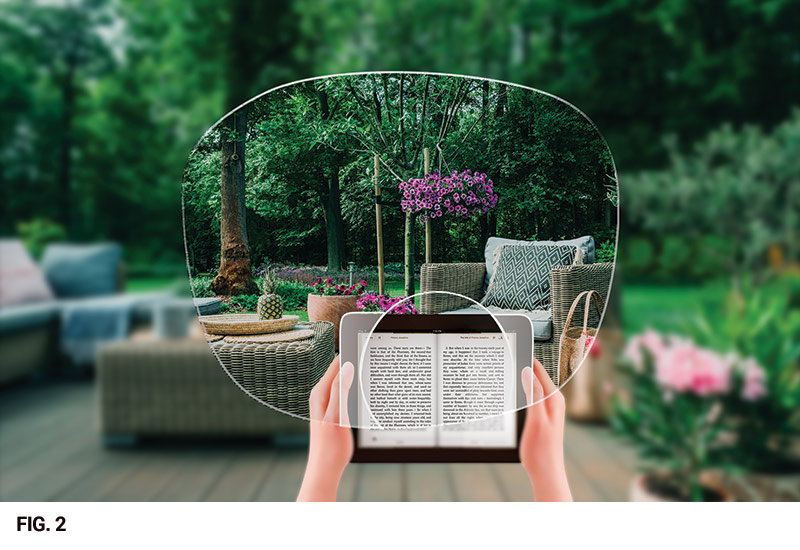
ROUND
With a diameter of 32 mm, the Endless Bifocal segment is positioned in the lens similarly to conventional bifocals (Fig. 2). Current flat top 28 bifocal wearers will find adaptation smooth and easy when switching to Endless Bifocal.
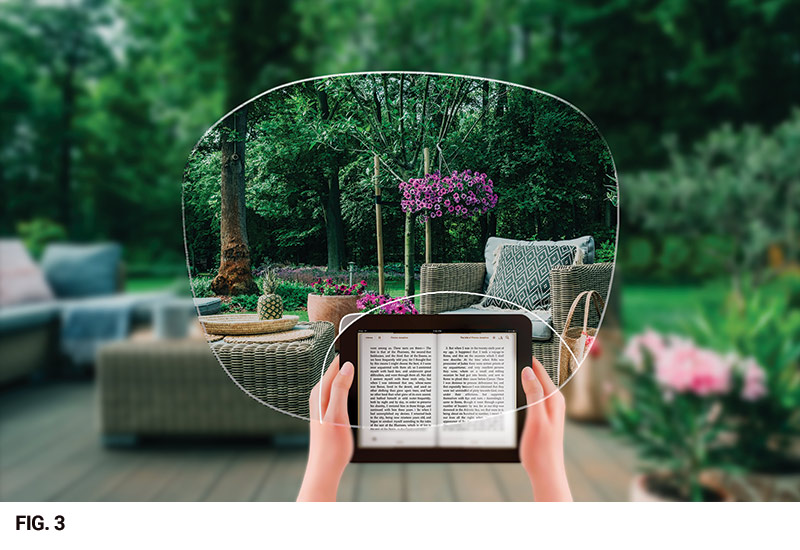
WIDE
In this configuration, the segment is expanded to 40 mm, offering a noticeably larger near
viewing area while maintaining panoramic distance vision. This configuration is ideal for current wearers of wide-segment conventional or executive bifocals (Fig. 3). It is also optimal for vision therapy for children with accommodative difficulties.
Endless Bifocal lenses are fully personalized using IOT Digital Ray-Path 2 Technology to minimize oblique aberrations, resulting in broad fields of clear vision and compensated for 3,149 individual directions of gaze. Position of wear measurements and other parameters unique to the individual patient are utilized in the free-form design to produce personalized eyewear, providing crisp, clear vision throughout the lens.
In the part of the lens used for distance vision, the Digital Ray-Path 2 technology optimizes the lens for significantly better peripheral optics than conventional bifocal lenses. The near area is larger by up to 40 mm. Cosmetically, the Endless Bifocal lenses are superior to conventional bifocals. They have a smooth spherical front surface instead of the very apparent ledge seen in traditional flat-top bifocals, improving aesthetics. Any spherical lens blank can be used, allowing the optician to offer bifocal wearers virtually any combination of frames, lens materials and treatments.
Endless Bifocal lens configurations address the most common visual needs of bifocal wearers:
Personalization: The design is further enhanced, when desired, by a complete set of individualization parameters that consider the frame’s unique attributes relative to the fit for the individual wearer. IOT Digital Ray-Path 2 will utilize default values if no parameters are provided.
Compensated power: Lens power differs from prescribed power. The design is calculated, point by point, to ensure wearers perceive the proper power when looking through their lenses at every distance and direction of gaze, including near distances for viewing electronic devices.
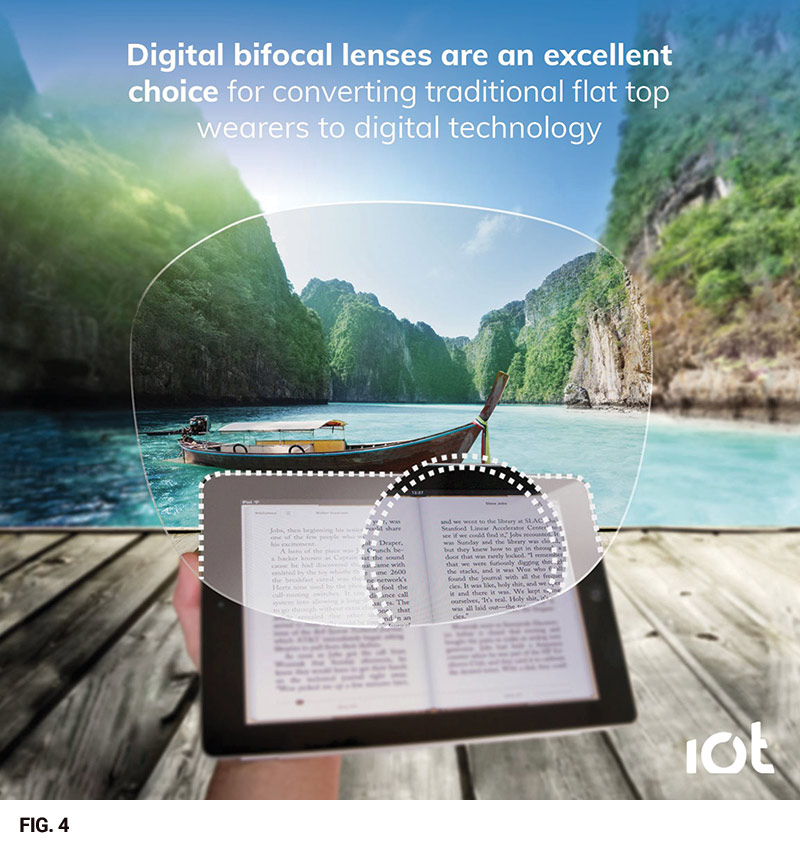
Optimized for accommodative object space: IOT Digital Ray-Path 2 incorporates the intelligent use of the wearer’s accommodation into the traditional calculations for reducing oblique aberrations, resulting in a superior personalized lens. IOT digital Ray-Path 2 minimizes oblique aberrations more effectively than ever before.
Consistency: The perceived power distribution remains stable, regardless of the prescription or base curve; this is especially beneficial for high prescriptions and large or wrapped frames.
The IOT Endless digital bifocal is an excellent solution for presbyopes who have difficulty adapting to progressive lenses. These free-form personalized bifocals have no unwanted astigmatism, no swim effect and a less visible segment line. They are an excellent option to help upgrade flat-top bifocal wearers to the many benefits of free-form lens design and technology while giving them more options in lens material, treatments and frame selection.



